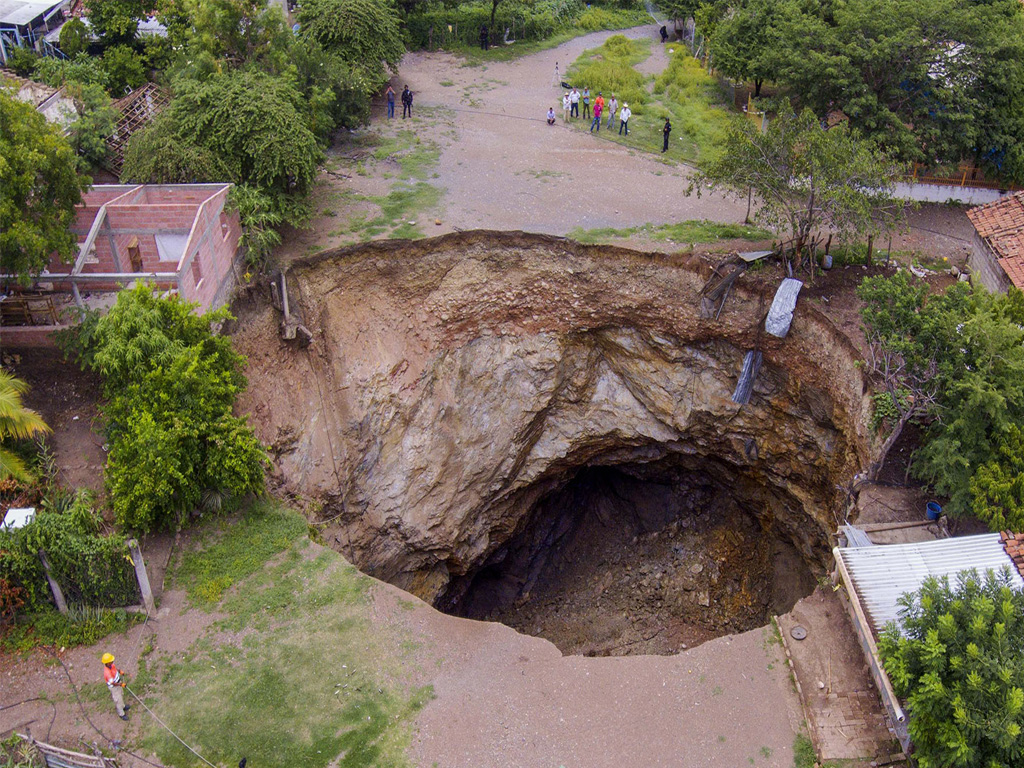
Sinkholes: what they are, how they form and what to do in an emergency
Dangerous sinkholes: how to recognise them and what to do in an emergency
Even if our world can be said to be invaded by concrete and plastic, it is difficult to call it even completely solid. In areas where we do not often see floods or tornadoes, there can instead be problems that come from below, from the earth. And in this case we are not even talking about earthquakes, but we are precisely referring to the problem arising from sinkholes.
What are Sinkholes?
Also referred to as sinkholes, Sinkholes are sinkholes that almost always occur naturally, with some cases already showing structural weaknesses – but there are also examples of sinkholes that were previously very solidly constructed.
These ‘holes’ are in fact created almost suddenly, leaving a void just below the ground or structure on which the whole is built.
Some sinkholes in the world
In general, there is a ban on building on anything that may present a high risk for a sinkhole. For example, a shopping centre (destroyed, however, by an internal structural failure) located in Bangladesh was located on a high risk sinkhole, because the ground on which it was built was a swamp. Assuming that such a structure collapses precisely because of the famous sinkhole, not even a special emergency vehicle or fire brigade can do much: the disaster is far more serious and deadly than a simple collapse.
An excellent example was also given by what happened in Israel in 2022. During a private party, a sinkhole opened up in the middle of a swimming pool. Everyone manages to save themselves, except for a 30-year-old man who is sucked into it. He disappears into the hole, and there is not even time to activate one of the emergency procedures. The victim is found in the depths of the hole, drowned. The whole thing was described by the police as a ‘deadly trap with no escape’. The pool was built in an unauthorised spot.
In April 2023, the numerous rainfalls and water infiltrations in a particular spot in the town of Naples in Italy caused a piece of the road to collapse: in general, the construction below the asphalt was solid, but over the decades it had worn away, thus creating this dangerous void. Therefore, a sinkhole can also be created in a place where there has always been solid ground.
What to do in the event of sinkholes
Here are some general emergency procedures to follow in the event of a sinkhole:
Move away from the area
If you notice a sinkhole, move away from the area immediately and warn other people to do so as well.
Call for help
Call the local emergency number (e.g. 112 in Europe or 911 in the US) to report the sinkhole.
Avoid the edge
The ground near the edge of the sinkhole may be unstable. Avoid approaching the edge and warn other people not to approach it.
Barricade the area
If possible, put up barriers, boundary tape or other warning signs to prevent people from approaching the sinkhole area.
Evacuate if necessary
If the sinkhole poses a threat to homes or other structures, follow the instructions of local authorities to evacuate the area safely.
Document
Take notes and, if possible, take photos or video from a safe distance to document the event. This information can be useful for authorities and specialists.
Cooperate with the authorities
Provide all necessary information to the authorities and follow their instructions. It may be necessary to remain outside the area until it is declared safe.
In any case, safety is the first priority. Always follow the instructions of the local authorities and professionals in the event of sinkhole emergencies.


